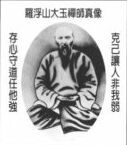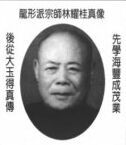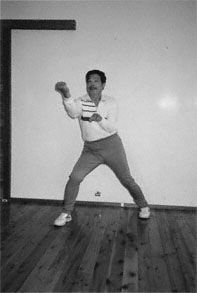Dragon Style Kung Fu
Lung Ying, aka Dragon Style, is classified as a southern kung fu Hakka style, tracing its history back to an Abbott called Dai Yuk Sim Si who lived during 19th Century China.
Dai Yuk was the head abbot at Wah So Toi temple on Mount Luo Fuo Shan, Guangdong Province, and passed down the art to Grandmaster Lam Yiu Gwai (LYG).
LYG is accredited as the Sijo (founder) of Dragon Style as he was the first person to widely spread it to the public. As a youth in the late 1800s, LYG grew up in a kung fu family learning a Hakka village style called Lam Gar Kuen from his father Lam Yuen, who also studied at Wah So Toi. After having established his own school at the age of 16, LYG started teaching around Bolou county near Wai Chow, where he met students of Dai Yuk. Subsequently, he began training at Wai So Toi for a number of years and eventually integrated what he had learned from Lam Gar and the temple into the Dragon Style we know and practice today.
Lam Yiu Kwai passed away in HK in 1965 at the age of 91. He had thousands of students during his teaching career, the last and youngest being Chan Cheung (Robert Chan) of Sydney, Australia. Master Chan taught in Hong Kong for over 25 years before relocating to Australia in 1988, bringing with him Dragon Style Kung Fu and establishing the Dragon Style Kung Fu Fitness and Therapy Centre in Cabramatta. He retired in 2003 after serving his local community for 15yrs as an acupuncturist and herbalist in Traditional Chinese Medicine, and sadly passed away in October 2010 aged 81.



Characteristics of Dragon Style.
Lung Ying is characterised by its hand movements, waist power and slide stepping. Few kicks are employed in the style, as it is a close range southern combat system, which uses all parts of the arms and hands to defend against an attacker. All kicks are below chest level and are used as stomping kicks, snap kicks, and trips to attack the lower limbs of an opponent. The hand movements comprises of jabs, grabs, open palm strikes, punches, elbows, and also makes use of the forearms. Each technique has one or more principles of Tun To Fau Chum (Swallow Spit Float Sink). Techniques are circular, and attacking is highly aggressive and frustrating for an opponent, where they are relentlessly pressed and checked until defeated. Stances include the forward stance, bow and arrow, cat stance, and horse stance. It is he foundation of one’s training where the ability to move fluidly like a dragon begins. Dragon style is a traditional self defence system, and all practitioners strive to follow the teachings of the founder:
-
You should respect kung fu principles, masters, and friends.
-
You should honour justice, humanity and self-esteem.
-
If you are loose in morality, the master will not pass his skill to you, even if you were his son.
-
If you are eager to learn, the master will teach you even if you cannot afford to pay.
-
After learning the skill of dragon fist and staff, you must not bully others with your skill.
-
You should understand that self-restraint is a way of avoiding conflicts, not a sign of timidness.
-
Let others boast their egos, you need only to stick to your conscience and principles.

“Control yourself, let others do what they will. This does not mean you are weak. Control your heart, obey the principles of life. This does not mean others are stronger”